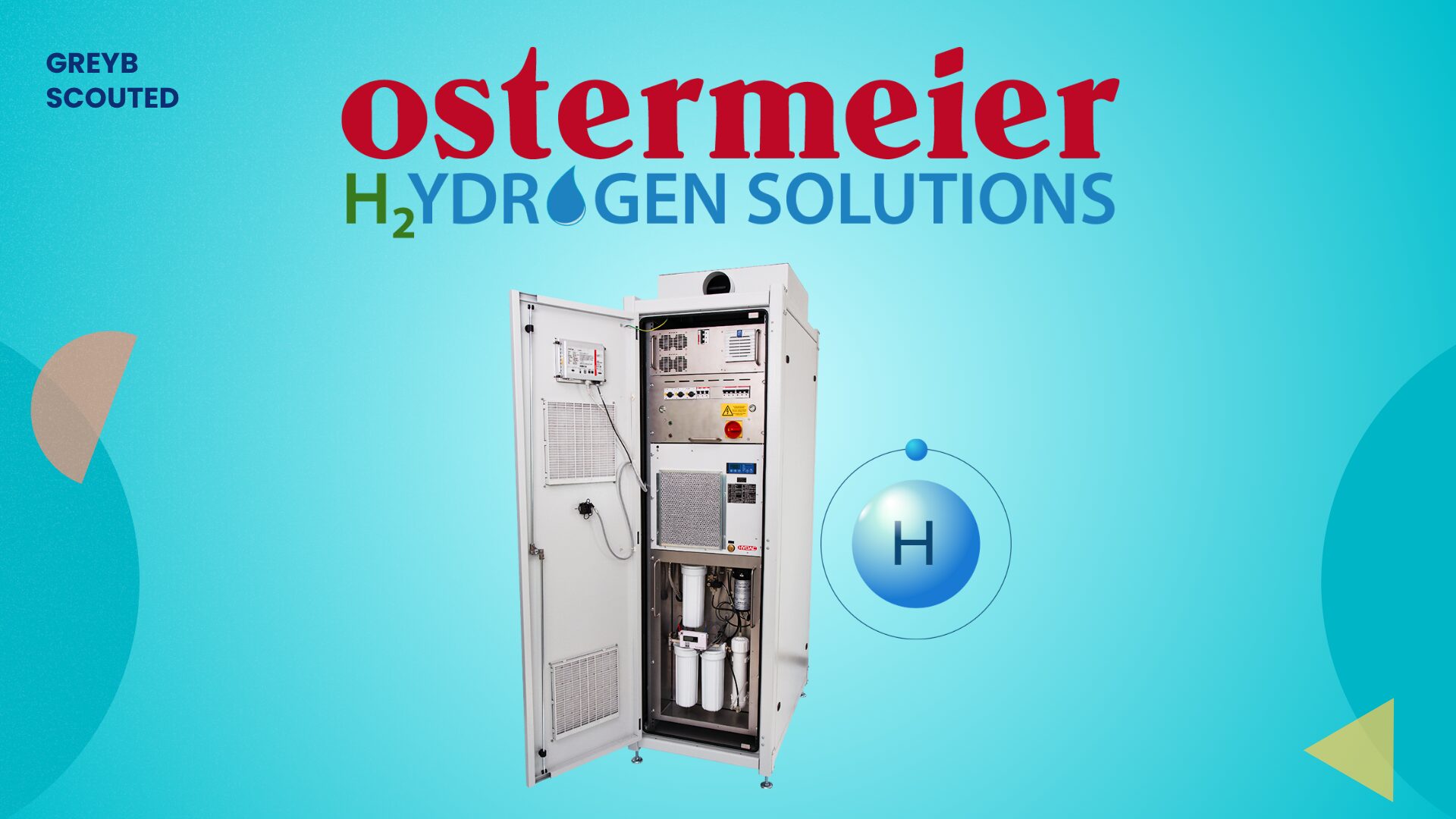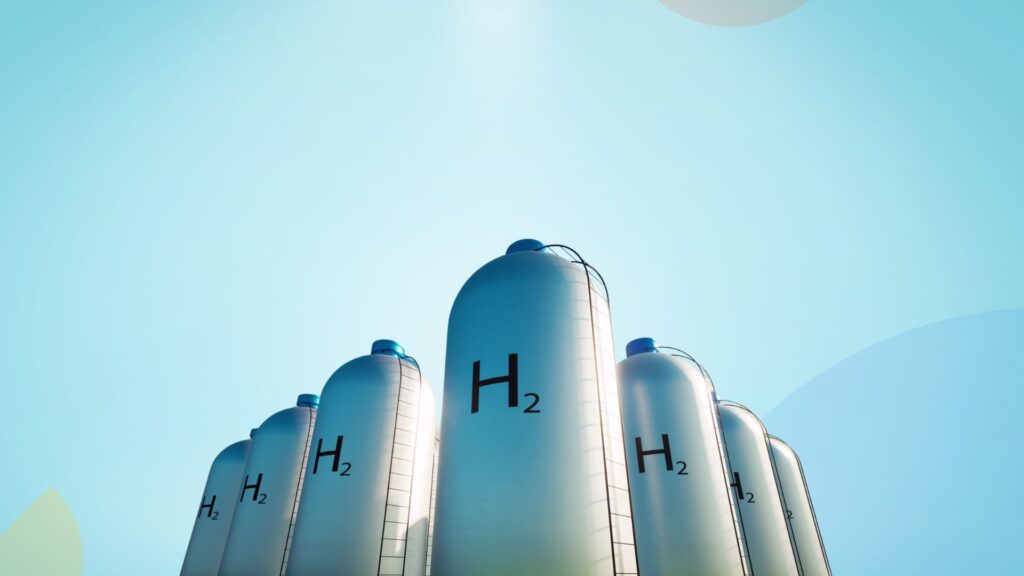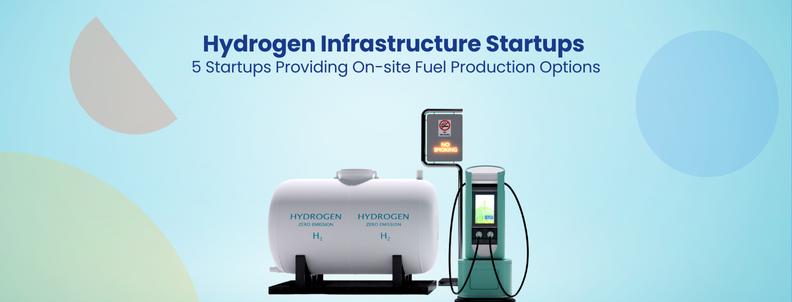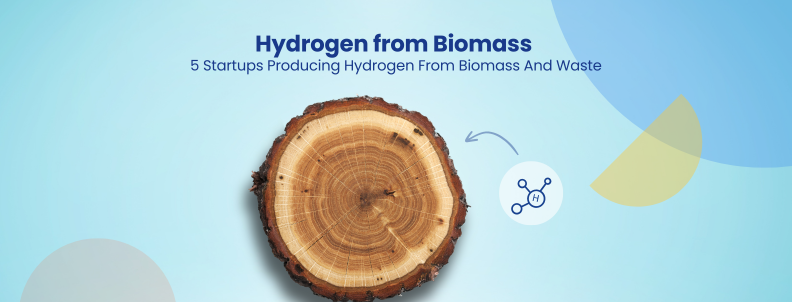Producing hydrogen has always been a large-scale operation, confined to massive industrial plants equipped with specialized infrastructure and high energy demands.
But imagine if you could make it at home. So far, this hasn’t been possible because hydrogen production typically requires intensive energy input, costly catalysts, and complex safety systems to manage its flammability and storage. Most production methods, like steam methane reforming or large-scale electrolysis, are still too energy- and cost-heavy for household use.
Startups like Ostermeyer Hydrogen Solutions is tackling these challenge by making hydrogen energy local, modular, and personal. Their compact, plug-and-play hydrogen systems let individuals or small businesses generate, store, and reuse energy from their own solar installations. These systems turn excess solar power into hydrogen, store it safely, and reconvert it into electricity and heat when required, without reliance on grid infrastructure or fuel deliveries.
To better understand how their system works, we spoke to Markus Ostermeier, CEO of Ostermeyer Hydrogen Solutions. This article contains notable highlights from our entire conversation.
This interview is part of our exclusive Scouted By GreyB series. Here, we speak with the founders of innovative startups to understand how their solutions address critical industry challenges and help ensure compliance with industry and government regulations. (Know more about startups scouted by GreyB!)
“Energy should be like water—something everyone can control, not just big companies.”

Markus Ostermeier is the CEO and co-founder of Ostermeier Hydrogen Solutions GmbH (OHS), where he leads the development of modular hydrogen systems to enable local energy autonomy. Ostermeier brings deep engineering expertise and entrepreneurial leadership to OHS, driving innovations in hydrogen storage and energy independence. His work blends technical rigor with a mission to decentralize access to clean energy through scalable hydrogen solutions.
A new hydrogen system that skips the grid!
Ostermeyer Hydrogen Solutions is a German startup making hydrogen energy accessible on a hyper-local scale. Their systems are compact, modular, and designed to help individuals and small institutions produce, store, and reuse their own renewable energy. At the core of their offering is a flexible hydrogen kit: a small electrolyzer to convert solar power into hydrogen, a storage unit, and a fuel cell to turn it back into electricity and heat. Built to be easily shipped and installed, often within a single container, these systems offer an alternative to large-scale hydrogen projects and grid dependency.
What exciting developments have happened at Ostermeyer recently?
Markus: We’ve been fortunate to consistently have new deals coming in. Just recently, we delivered a complete containerized system to a university in Aachen, Germany. It includes a 30-kilowatt electrolyzer, a 16-kilowatt fuel cell, and the complete hydrogen storage solution. That’s pretty much what we do—compact, local hydrogen energy systems tailored for small-scale use.
What exactly is your company doing differently from others in the hydrogen space?
Markus: Our core idea is empowerment. We want people to control their own energy. Today, anyone can buy a solar panel or a battery, even for camping. Our goal is to make hydrogen as simple as possible. Most hydrogen systems are massive and centralized. We’re the opposite. Our electrolyzers are small—starting from just 2 kilowatts—and modular, so people can produce their own hydrogen, store it, and use it later. Whether it’s for an industrial process or seasonal energy storage, our flexible systems fit right in.
Isn’t hydrogen storage dangerous? How do you deal with flammability and leakage?
Markus: Surprisingly, hydrogen is safer than many think. It’s 14 times lighter than air, so if there’s a leak, it disperses almost instantly. It’s much less risky than gasoline, which can pool and spread. Plus, we have sensors that detect leaks within seconds—well before they reach any danger level. The system automatically shuts down and isolates the leak. We’ve never had any safety incidents.
Which of your products has seen the most traction?
Markus: About half of what we’ve sold is being used for seasonal energy storage. That means the full combo: electrolyzer, storage, and fuel cell. People want year-round energy independence. That’s the real value. Our systems let them store their summer solar power for winter use. It’s about autonomy, not just backup.
So, can people like you and me actually use your systems?
Markus: Yes, in principle. Today, it’s mostly enthusiasts and early adopters who have the budget. It’s like early electric cars—only a few could afford them at first. But prices are coming down. We believe that in 10-15 years, systems like ours will be as common and affordable as home solar.
How scalable is your solution? Could it work for an island, a city, or just homes?
Markus: Our focus is on small and decentralized setups. We’re not aiming to compete with 10-megawatt electrolyzers. But we can scale horizontally. Instead of building a bigger system, we develop more units. That keeps costs down and flexibility high. For example, we’re working on a project in the Cook Islands—an ideal place for small, self-contained systems.
Are you only selling in Germany? Or have you expanded internationally?
Markus: Our production is in Germany, but our customers are worldwide—France, Belgium, Finland, Ghana, Tunisia, Oman. Hydrogen is a global need. In many African countries, for example, there’s no dense grid. But they have sunlight. With our systems, they can produce electricity and fuel without relying on diesel generators or external supply chains.
What infrastructure do customers need to use your system?
Markus: Very little. In many cases, we package everything into a 20-foot container. You just need a foundation, access to electricity, and water. That’s it. In places like Ghana, this containerized setup is ideal. You don’t need to build a whole facility around it.
You mentioned heat recovery earlier—how does that work?
Markus: Our fuel cells generate electricity, but also heat—around 60°C. We recover that heat using water tanks, so it can be reused for showering, space heating, or even drying cocoa beans. In some regions, it’s not about heating homes, but using hot water efficiently. We don’t waste that energy—it’s part of the system.
Water is critical for electrolysis. How do you handle regions with scarce water resources?
Markus: Good question. In places like Africa, we’re exploring ways to close the loop. One kilogram of hydrogen uses about 10 liters of water, but when we reconvert it, we get that water back. So we could recycle it. Also, we’re looking at technologies that pull water from air or even use seawater directly—especially relevant for islands.
What are your current challenges? What’s next for Ostermeyer?
Markus: Our biggest challenge now is cost. The technology works—we’ve proven that. But to reach mass adoption, we need to make it affordable. So our focus is on simplifying production, increasing volume, and reducing price. That’s what will unlock the broader market.
Can you share an example of a time when your system made a real difference?
Markus: The clearest impact is on CO2 savings. In Germany, where much of the electricity still comes from coal, using our system can save 1–4 tons of CO2 per unit per year. That may not sound huge, but if we had a million units? That’s real change. And for many customers, it’s not just about emissions—it’s about no longer needing grid electricity at all.
Meet our Interviewer – Raveena Singh, Senior Research Analyst at GreyB
Raveena Singh, Associate Researcher
Want to find other scalable startups working on innovative energy storage solutions? Please fill out the form below to contact our experts.
Get in touch
Please share your query below









